Top Reasons Colombia Industries Choose Pallet Inverters for Reducing Manual Strain in Coffee and Fruit Logistics
Handling heavy loads day in and day out is a huge challenge in Colombia's vibrant coffee and fruit industries. The constant manual lifting of pallets leads to worker injuries, slows down the entire logistics chain, and puts valuable products at risk of damage. Imagine your most skilled team members sidelined with back problems, or a full pallet of premium, export-quality fruit crashing to the floor. This is a constant worry that eats into efficiency and profits. But what if you could remove that physical burden, speed up transfers, and protect both your people and your products with one smart investment? This is precisely why pallet inverters are becoming essential equipment in Colombian warehouses.
Colombian coffee and fruit industries primarily choose pallet inverters to drastically reduce manual labor and the associated physical strain on workers. This leads to fewer workplace injuries, faster handling times, less product damage, and a more efficient and reliable supply chain for their valuable exports.
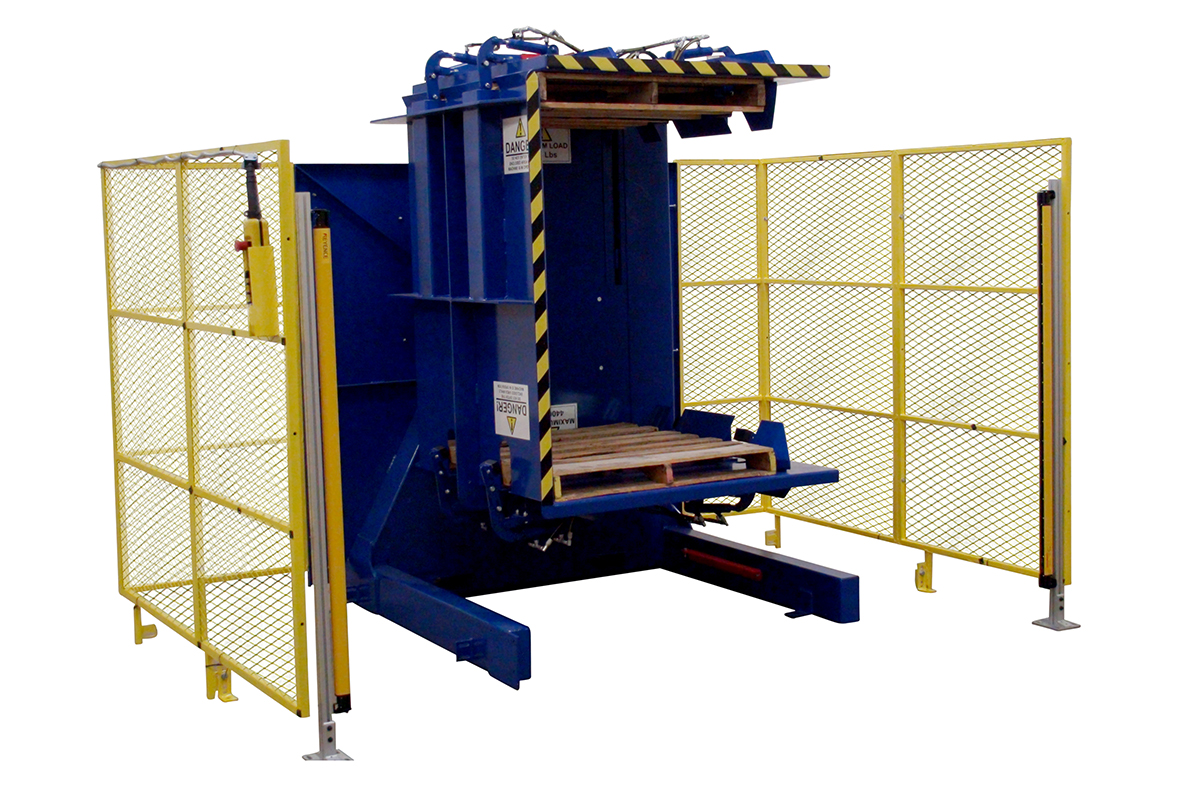
I've spent my entire career around heavy machinery, first as an engineer and now as a factory owner. I understand the pressure to keep operations running smoothly. The benefits of automating strenuous tasks go far beyond just preventing injuries. It’s about building a more resilient, efficient, and profitable operation from the ground up. Let’s dive deeper into the specific reasons why leaders in Colombian logistics are turning to this technology. We will explore how these machines directly impact worker safety, what their true return on investment looks like, and why versatility is a non-negotiable feature.
How Do Pallet Inverters Directly Improve Worker Safety in Colombian Warehouses?
In any manual handling operation, the risk of injury is always present. Your team members are your greatest asset, but asking them to repeatedly lift and move loads weighing hundreds of kilos is a recipe for disaster. The problem isn't just a single incident; it's the cumulative effect of daily strain that leads to chronic back pain, pulled muscles, and other musculoskeletal disorders. This results in lost workdays, rising insurance claims, and a decline in team morale. The solution is to take the person out of the hazardous equation by investing in equipment designed for the task.
Pallet inverters directly improve worker safety by completely automating the physically demanding process of transferring goods from one pallet to another. The machine securely clamps the load, rotates it, and allows for the easy exchange of the pallet, all without a single person having to manually lift a box or a bag. This simple-sounding function eliminates the root cause of most handling-related injuries.
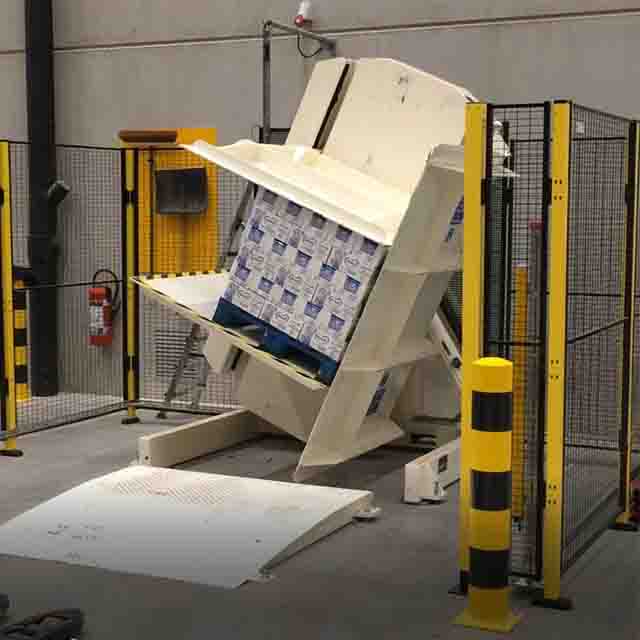
The Ergonomics of Automation
The core principle here is ergonomics—designing the job to fit the person, not the other way around. Manual pallet stacking forces workers into awkward postures: bending, twisting, and reaching, all while bearing significant weight. A pallet inverter replaces these high-risk movements with a controlled, mechanical process. The machine does the heavy lifting. The operator simply uses a control panel, often from a safe distance.
I remember visiting a facility where workers had to manually transfer bags of coffee beans from wooden pallets to plastic ones for export. The process was slow, and the manager told me that lower back complaints were their number one safety issue. After they installed a pallet inverter, they not only saw their injury reports drop to nearly zero, but they also reduced the transfer time by over 70%. The machine doesn't get tired, it doesn't get sore, and it performs the task perfectly every time. This is the fundamental safety advantage: removing human physical limitation as a variable in a high-load environment.
Quantifying the Safety Improvements
As a business owner, I know that what gets measured gets managed. The impact of a pallet inverter on safety isn't just a feeling; it can be tracked with clear metrics. Key Performance Indicators (KPIs) like the Lost Time Injury Frequency Rate (LTIFR) and workers' compensation claim costs are direct measures of your operational safety. Before implementation, you establish a baseline. After the pallet inverter is integrated, you track these same metrics. In almost every case, businesses see a dramatic and sustained decrease in both. This provides a clear, data-backed justification for the investment. It transforms safety from an expense into a measurable component of operational excellence.
A Comparison of Manual vs. Automated Handling
| Risk Factor | Manual Pallet Transfer | Pallet Inverter Transfer |
|---|---|---|
| Lifting & Carrying | High risk. Workers lift individual items repeatedly. | Eliminated. Machine lifts the entire pallet load. |
| Awkward Postures | High risk. Constant bending, twisting, and reaching. | Eliminated. Operator stands upright at a control panel. |
| Repetitive Motion | High risk. Same movements repeated for hours. | Eliminated. Task is completed in a single machine cycle. |
| Risk of Dropped Load | Moderate to High. Human error can lead to dropped items. | Very Low. Secure clamping system holds the load firmly. |
| Worker Fatigue | High. Physical exertion leads to fatigue and errors. | Low. The operator's role is supervisory, not physical. |
What is the Real ROI of a Pallet Inverter in the Colombian Fruit and Coffee Supply Chain?
As a factory owner, every major purchase comes down to one question: will it pay for itself? It's easy to see a new machine as just another expense on the balance sheet. But a piece of equipment like a pallet inverter is not a cost; it's an investment in efficiency. The fear is that the machine will sit underutilized or that its benefits won't outweigh its price tag. The key is to look beyond the initial purchase price and calculate its total impact on your operation.
The real return on investment (ROI) for a pallet inverter is a powerful combination of direct cost savings and indirect productivity gains. You see immediate savings from reduced labor needs and eliminated product damage, but the true value emerges in higher throughput, improved employee retention, and the ability to handle more business without increasing your headcount.
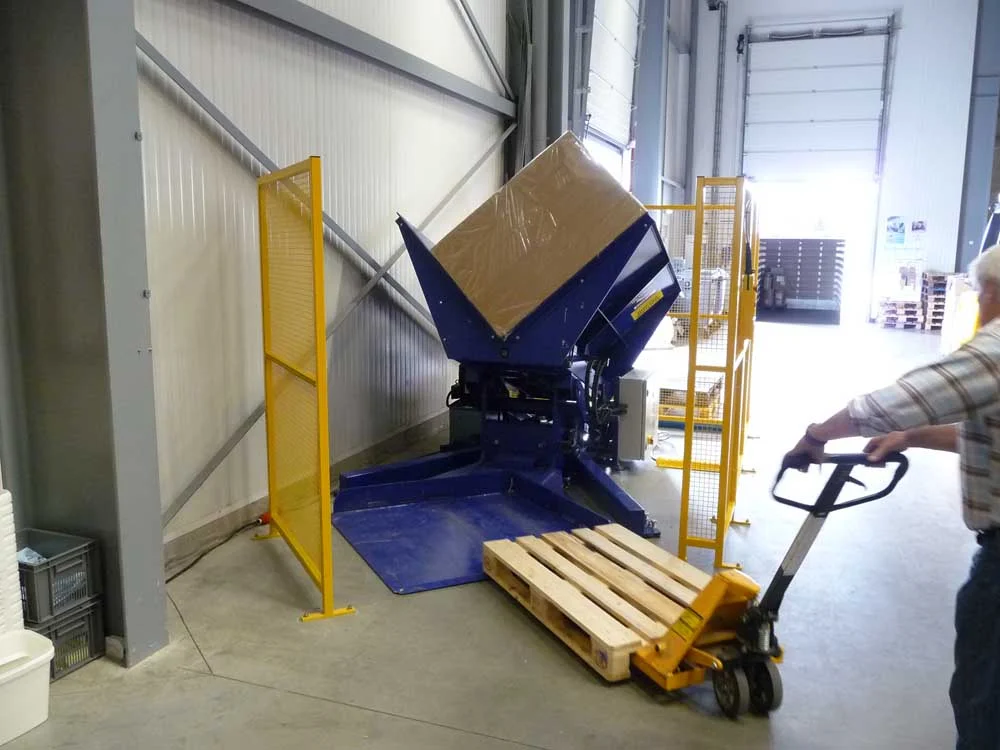
Calculating the Direct Financial Wins
Let's break down the most obvious savings. First is labor. A manual pallet transfer might require two or three workers and take 15-20 minutes. A pallet inverter allows a single operator to do the same job in under two minutes. You can calculate this saving directly: (Number of workers saved) x (Hourly wage) x (Hours of operation). This alone often creates a compelling case.
Second is product damage. When handling delicate fruits or high-value coffee, every dropped box or torn sack is lost profit. Pallet inverters handle loads with consistent, even pressure, dramatically reducing the chances of accidents. I spoke with a fruit exporter in Colombia who estimated they were losing nearly 3% of their product during the final palletizing stage due to manual errors. With an inverter, that loss fell to less than 0.5%. Over a year, that saving alone paid for a third of the machine's cost.
Finally, consider the costs of worker injuries. These include direct medical expenses, insurance premium hikes, and the cost of hiring and training replacements. By preventing these injuries, the pallet inverter delivers a direct, measurable financial return.
Uncovering the Indirect Value
The less obvious benefits are often the most powerful. When you can transfer loads faster, you increase your facility's throughput. This means you can process more orders and ship more products in the same amount of time. This is how you grow your business. Faster processing also leads to fresher products arriving at their destination, which is critical for the fruit industry and enhances the quality reputation of Colombian coffee.
Furthermore, investing in modern, ergonomic equipment sends a strong message to your employees. It shows that you value their well-being. This improves morale, reduces employee turnover, and makes your company a more attractive place to work. In a competitive labor market, retaining skilled and experienced staff is a significant financial advantage.
A Simple ROI Framework
| Financial Factor | Description | Example Calculation (Annual) |
|---|---|---|
| Initial Investment | Total cost of the pallet inverter, including installation. | -$50,000 |
| Labor Savings | (Workers reassigned) x (Annual Salary + Benefits) | 2 workers x $15,000 = +$30,000 |
| Damage Reduction | (Value of goods handled) x (% damage reduction) | $1,000,000 x 2% = +$20,000 |
| Injury Cost Savings | Reduced insurance premiums and compensation claims. | Average saving = +$5,000 |
| Annual Maintenance | Cost of parts and service for the inverter. | -$2,000 |
| Net Annual Return | (Labor + Damage + Injury Savings) - Maintenance | $30k + $20k + $5k - $2k = $53,000 |
| Payback Period | Initial Investment / Net Annual Return | $50,000 / $53,000 = ~11 months |
Why is Versatility a Key Factor for Colombian Exporters When Selecting a Pallet Inverter?
In a dynamic industry like logistics, one size rarely fits all. For Colombian exporters, the variety of products is immense. One day you might be handling sturdy, 60kg sacks of green coffee beans, and the next you could be dealing with fragile crates of physalis or boxes of bananas that bruise easily. Using equipment that is only designed for one type of load creates bottlenecks and inefficiencies. You might need to buy multiple specialized machines, which is expensive and takes up valuable floor space.
Versatility is a critical decision-making factor because it ensures one machine can handle the diverse range of products that Colombian exporters ship globally. A flexible pallet inverter that can adjust its clamping pressure, accommodate different load heights and weights, and swap various pallet types is a far more valuable asset than a single-purpose machine. It becomes a central hub for multiple product lines.
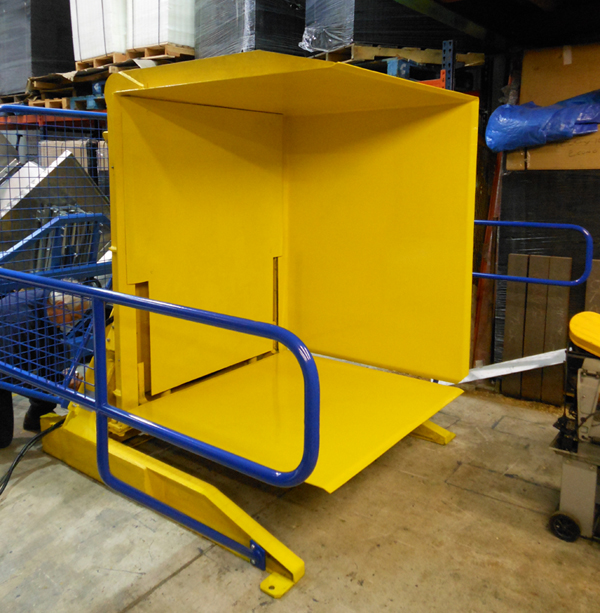
Adapting to Different Products and Pallets
The key to versatility lies in adjustability. Look for machines with a wide opening range to handle both short and tall pallets. The most crucial feature, however, is adjustable clamping pressure. This allows the operator to use high pressure to securely grip heavy, stable loads like coffee sacks, and then dial it down to a gentle hold for delicate fruit crates to prevent crushing or damage. This capability is non-negotiable for anyone handling mixed goods.
Another major driver for pallet inverters is the need to comply with international shipping regulations like ISPM 15. This standard requires wood packaging material to be heat-treated or fumigated to prevent the spread of pests. Many companies use cheaper, internal-use wooden pallets within their facility and then switch to compliant plastic or treated wood pallets for export. A pallet inverter makes this switch a fast, seamless process. It's also an invaluable tool for rescuing product from a broken or damaged pallet without having to manually unstack and restack the entire load.
Integration into Your Existing Workflow
A truly versatile machine should fit your process, not the other way around. Pallet inverters come in different configurations. A simple, standalone 180-degree inverter is perfect for areas where a forklift can load and unload directly. For more automated facilities, in-line models can be integrated directly into a conveyor system, allowing pallets to be swapped automatically as part of a larger production line. This forward-thinking approach aligns with the goals of digitization and automation that many modern plant managers, like Javier, are pursuing. The ability to choose the right configuration ensures the machine enhances your current workflow and can adapt to future process improvements.
Key Versatility Features to Evaluate
| Feature | Importance for Colombian Exporters | What to Look For |
|---|---|---|
| Adjustable Clamping Pressure | Critical. Prevents damage to delicate fruits while securing heavy coffee sacks. | A wide pressure range, easily adjustable from a control panel. |
| Wide Opening Range | High. Accommodates various pallet heights and load configurations. | Check the machine's spec sheet for min/max load height. |
| Load Capacity | High. Must handle the heaviest loads you anticipate (e.g., dense coffee beans). | A capacity rating at least 25% higher than your heaviest load. |
| Pallet Type Compatibility | High. Essential for switching between wood, plastic, CHEP, etc. | Ground-level loading and flexible platform design. |
| Configuration Options | Medium to High. Allows for integration into different facility layouts. | Standalone (forklift-loaded) vs. in-line (conveyor-fed) models. |
My Take: Beyond the Machine, Why a Partnership Matters More Than the Price Tag
Over my years in this industry, I've seen companies make investment decisions based on one thing: the initial price. It's a common mistake. You get a list of quotes, and you pick the lowest one. The problem is, a "bargain" machine can quickly become the most expensive piece of equipment you own. When it breaks down and you can't get parts, or when the supplier has no technical expert to answer your call, every minute of downtime costs you money and damages your reputation with customers. The real solution is to shift your thinking from buying a machine to choosing a partner.
From my own journey building SHJLPACK, I can tell you that the long-term value of any industrial equipment is tied directly to the quality of the supplier relationship. A price tag tells you what you pay today. A partnership ensures you get value for the next ten or twenty years. This means looking for a supplier who provides expert consultation before the sale, reliable support during installation, and responsive service for the life of the machine.
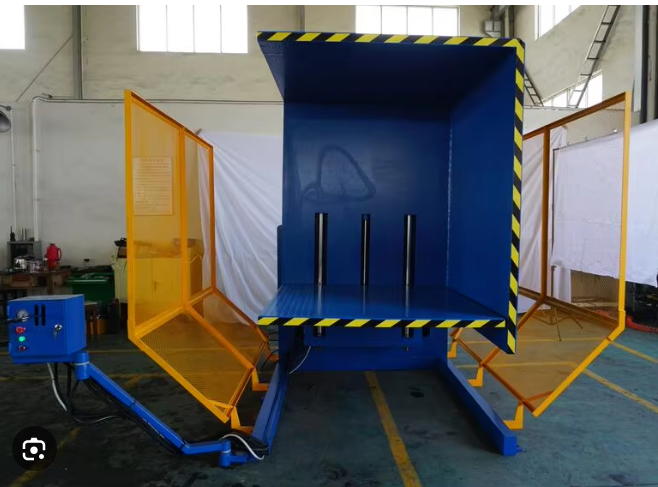
The Hidden Costs of a "Bargain"
I learned this lesson the hard way early in my career. We bought a critical piece of equipment from a supplier who offered a fantastic price. It worked well for six months. Then, a small but essential component failed. We called the supplier. They were in a different time zone and didn't have any English-speaking technicians. It took days to get a response. Then we learned the spare part would take six weeks to arrive. That machine sat idle for over a month, creating a massive bottleneck in our entire operation. The production losses from that one incident cost us more than the "savings" we got on the initial purchase. That's when I realized the supplier's expertise, support infrastructure, and parts availability are just as important as the machine's technical specifications.
What Defines a True Strategic Partner?
A partner is invested in your success. They don't just sell you a machine; they help you solve a problem. Here’s what that looks like in practice:
- Deep Industry Knowledge: Do they understand the specific challenges of handling coffee beans versus delicate fruits? Can they recommend the right clamping pressure or machine configuration for your unique products?
- Comprehensive Training: A good partner will ensure your operators and maintenance staff are fully trained on how to use and care for the equipment safely and efficiently. This reduces user error and prolongs the machine's life.
- Responsive After-Sales Support: When you have a problem, how quickly can you get a qualified technician on the phone or on-site? What is their spare parts availability like? This is the most critical test of a supplier.
- Proactive Maintenance Advice: A partner will work with you to create a preventive maintenance schedule, helping you avoid unexpected breakdowns. They act as a consultant, not just a seller.
How to Evaluate a Supplier Beyond Price
| Evaluation Criteria | Low-Cost Supplier (The "Bargain") | Strategic Partner (The "Investment") |
|---|---|---|
| Initial Consultation | Provides a standard quote based on model number. | Asks detailed questions about your product, process, and goals. |
| Technical Support | Email support with slow response times; language barriers. | 24/7 hotline with expert engineers; on-site support available. |
| Spare Parts | Long lead times; limited local stock. | Maintains a stock of critical parts for fast shipment. |
| Training | Provides a basic manual. | Offers on-site, hands-on training for operators and maintenance. |
| Long-Term Focus | Disappears after the sale is complete. | Conducts regular check-ins and offers advice on upgrades/improvements. |
Conclusion
A pallet inverter is more than equipment; it's a strategic investment in safety, efficiency, and growth, proving essential for modern Colombian coffee and fruit logistics.


